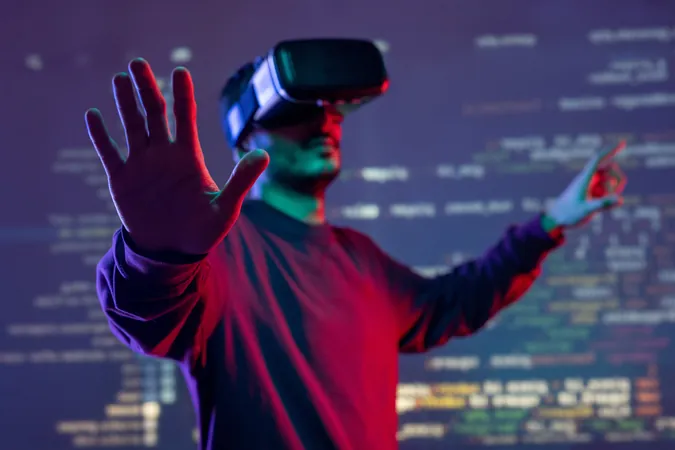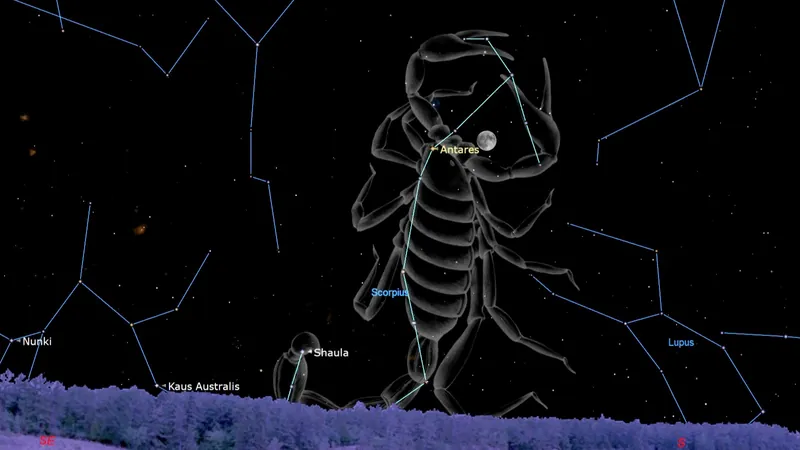
Astrophysicist's Bold Quest to Unravel Gravitational Waves in Uncharted Ways
2025-05-12
Author: Siti
A Revolutionary Approach to Gravitational Waves
Astrophysicist Jeremy Darling from the University of Colorado Boulder is embarking on a groundbreaking mission to measure the universe's gravitational wave background—the unseen cosmic waves that warp the fabric of space and time.
His innovative research, featured in The Astrophysical Journal Letters, has the potential to unlock profound cosmic secrets, including the fundamental nature of gravity itself.
Unlocking the Secrets of the Cosmos
"Precise measurements of gravitational waves offer incredible insights," Darling stated. "Different types of gravity could lead to a wide array of gravitational waves, each with its own story to tell."
Understanding Cosmic Ripples
Imagine Earth as a tiny buoy in a tempestuous ocean. Darling likens gravitational waves to the waves generated by supermassive black holes spiraling aggressively toward each other, culminating in cataclysmic collisions that send ripples across the universe.
These waves are a constant presence, though imperceptible to us, moving at such a slow pace that they take years to decades to pass our planet.
NANOGrav's Groundbreaking Discoveries
In a significant 2023 breakthrough, the NANOGrav collaboration successfully measured this cosmic wave pool, observing how gravitational waves distort spacetime, influencing the light emitted from pulsars—celestial objects that serve as cosmic clocks.
Darling's Ambitious Methodology
However, Darling is set on further revelations. While previous studies tracked gravitational waves flowing in a single direction—like waves crashing on a shore—he aims to explore their lateral and vertical movements relative to Earth.
Teaming up with quasars—extraordinarily bright supermassive black holes at the heart of galaxies—he seeks to detect telltale signals by measuring the precise movements of these celestial phenomena.
The Dance of the Quasars
"Gravitational waves shift and twist spacetime in multiple dimensions," Darling explains. "They cause cosmic objects to oscillate, creating an illusion of movement from our perspective on Earth."
Galaxies are not actually moving in space, but passing gravitational waves can make quasars appear to wiggle—a phenomenon that, if observed, could be revolutionary.
Challenges in the Cosmic Quest
Detecting these subtle movements poses immense challenges, requiring precision ten times greater than observing a human fingernail growing on the moon! Additionally, Earth’s rapid motion through space complicates the observations.
To filter out this noise, Darling is leveraging data from the European Space Agency's Gaia satellite, which has tracked over a million quasars since its launch in 2013.
A Glimpse into the Future
Though his current findings are inconclusive in proving that gravitational waves cause quasars to wiggle, Darling asserts that this quest is critical. Deciphering the physics behind gravitational waves could illuminate how galaxies evolve and challenge fundamental notions about gravity.
Promisingly, the Gaia team is expected to release additional data in 2026, potentially revealing the hidden signals within the vast dataset that could lead to new cosmic discoveries. "With millions of quasars in our sights, we might just unearth these elusive gravitational wave signals," Darling concludes.


 Brasil (PT)
Brasil (PT)
 Canada (EN)
Canada (EN)
 Chile (ES)
Chile (ES)
 Česko (CS)
Česko (CS)
 대한민국 (KO)
대한민국 (KO)
 España (ES)
España (ES)
 France (FR)
France (FR)
 Hong Kong (EN)
Hong Kong (EN)
 Italia (IT)
Italia (IT)
 日本 (JA)
日本 (JA)
 Magyarország (HU)
Magyarország (HU)
 Norge (NO)
Norge (NO)
 Polska (PL)
Polska (PL)
 Schweiz (DE)
Schweiz (DE)
 Singapore (EN)
Singapore (EN)
 Sverige (SV)
Sverige (SV)
 Suomi (FI)
Suomi (FI)
 Türkiye (TR)
Türkiye (TR)
 الإمارات العربية المتحدة (AR)
الإمارات العربية المتحدة (AR)